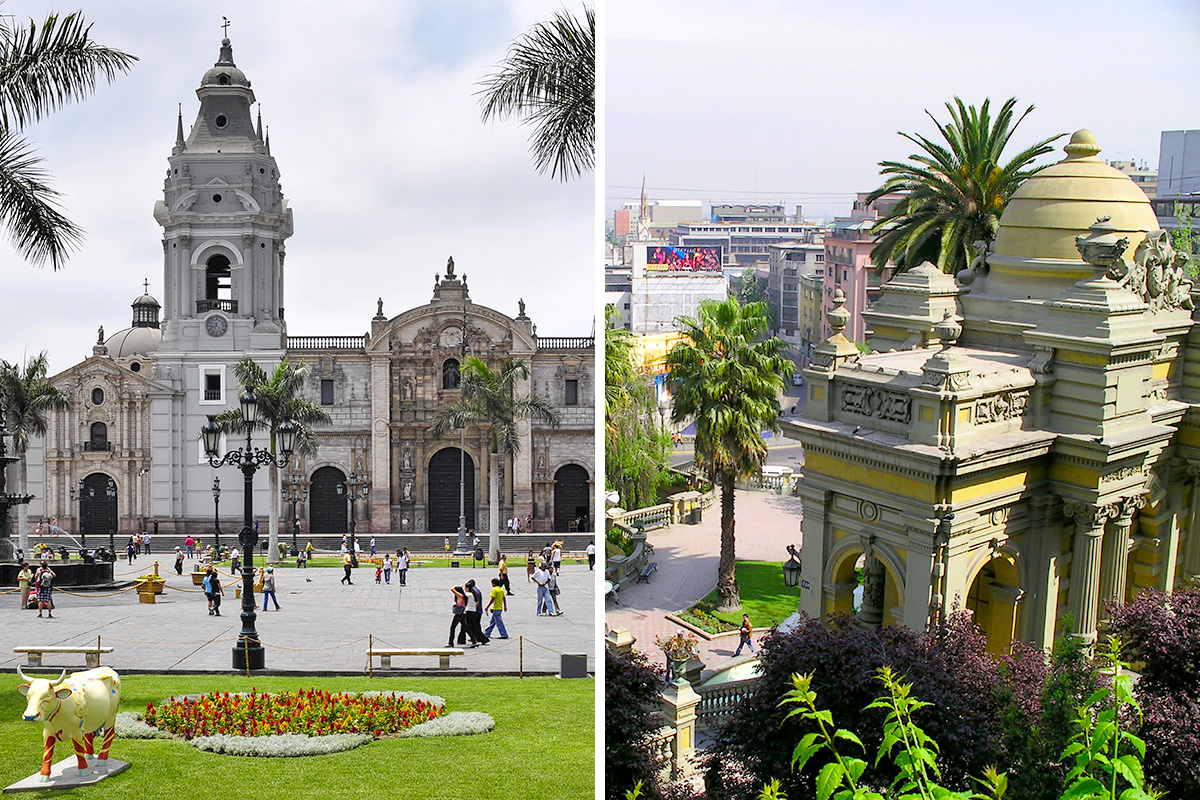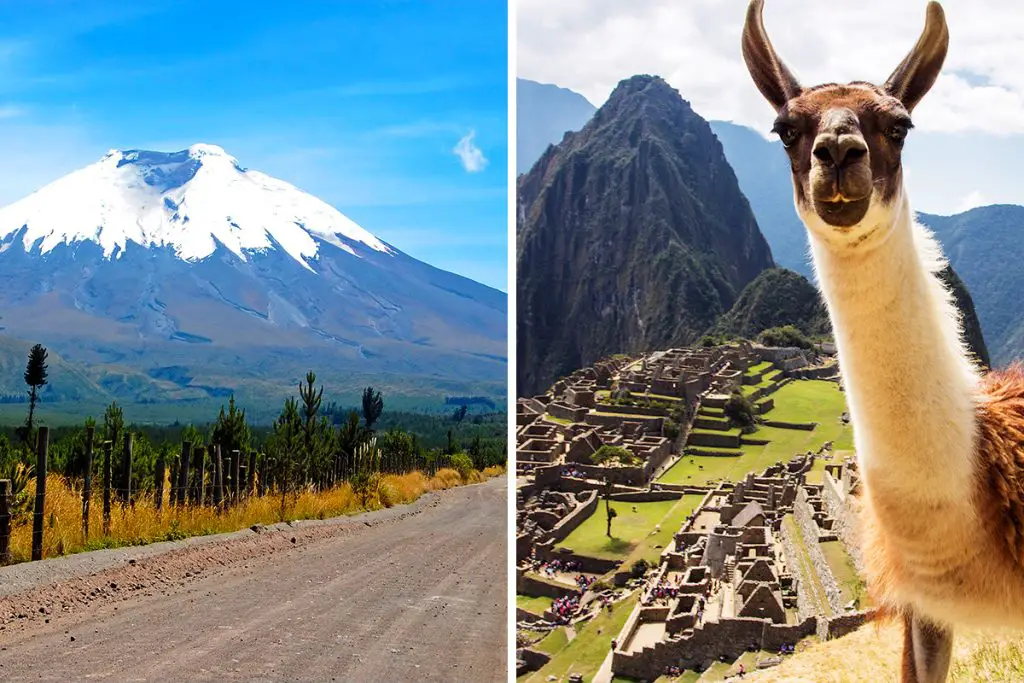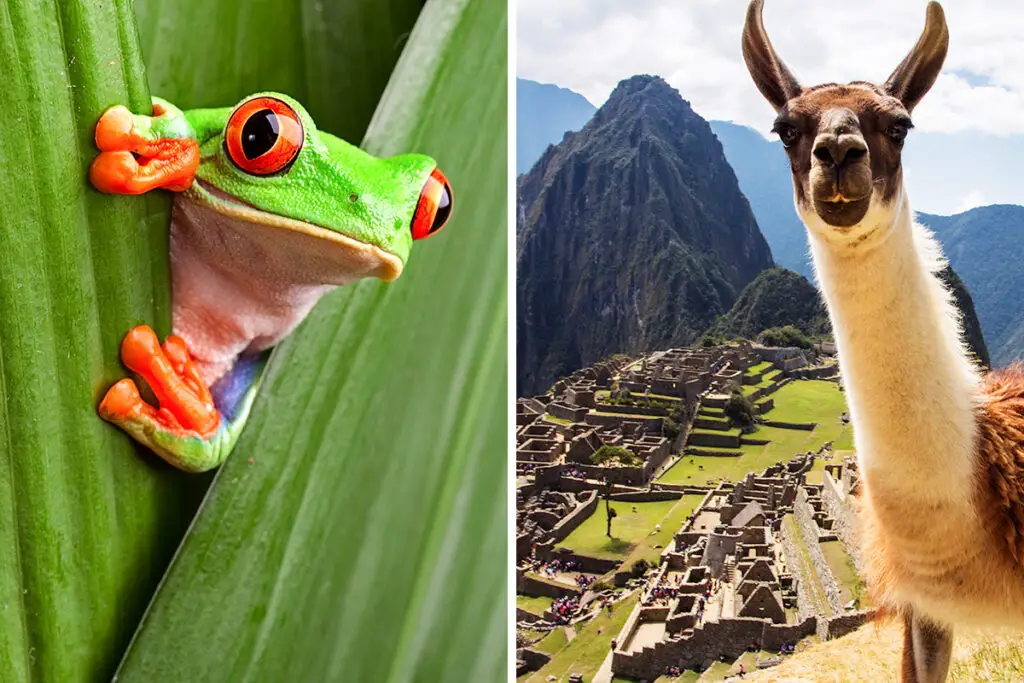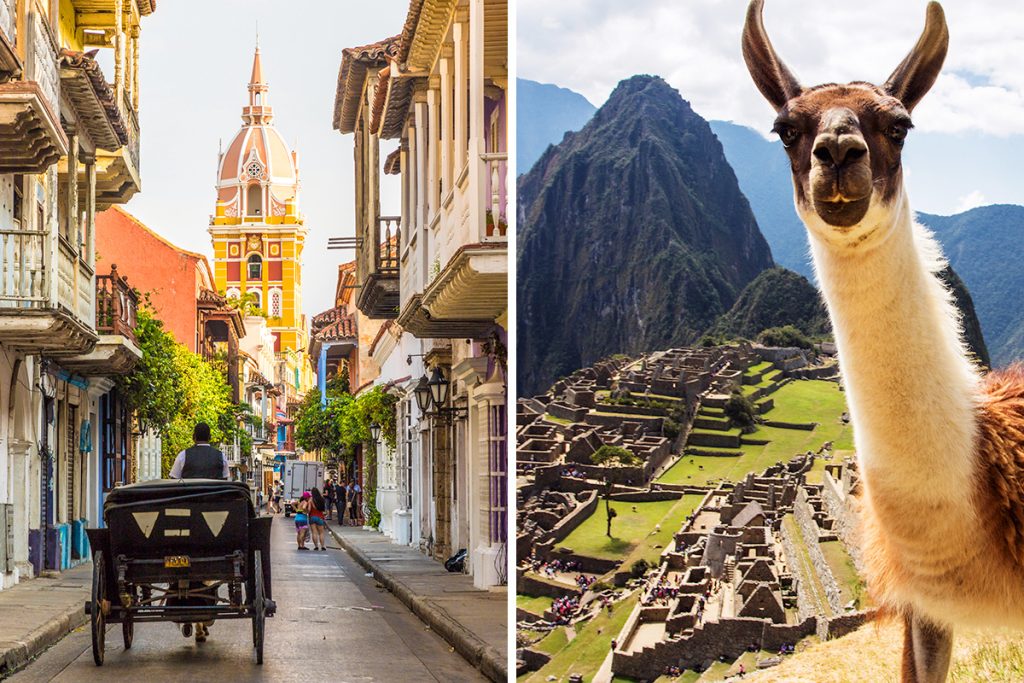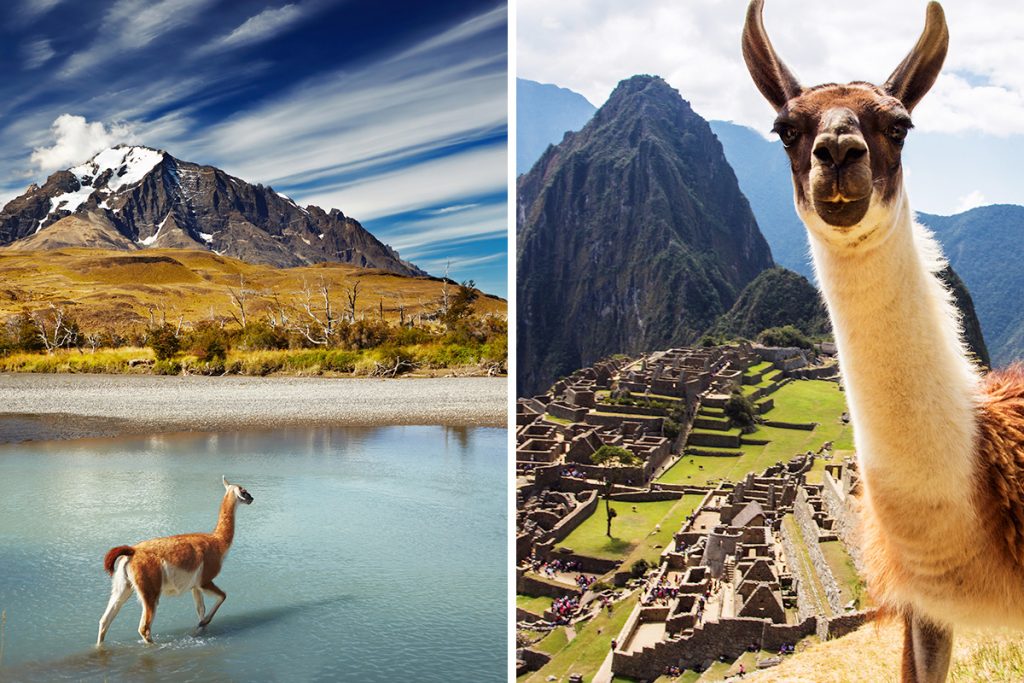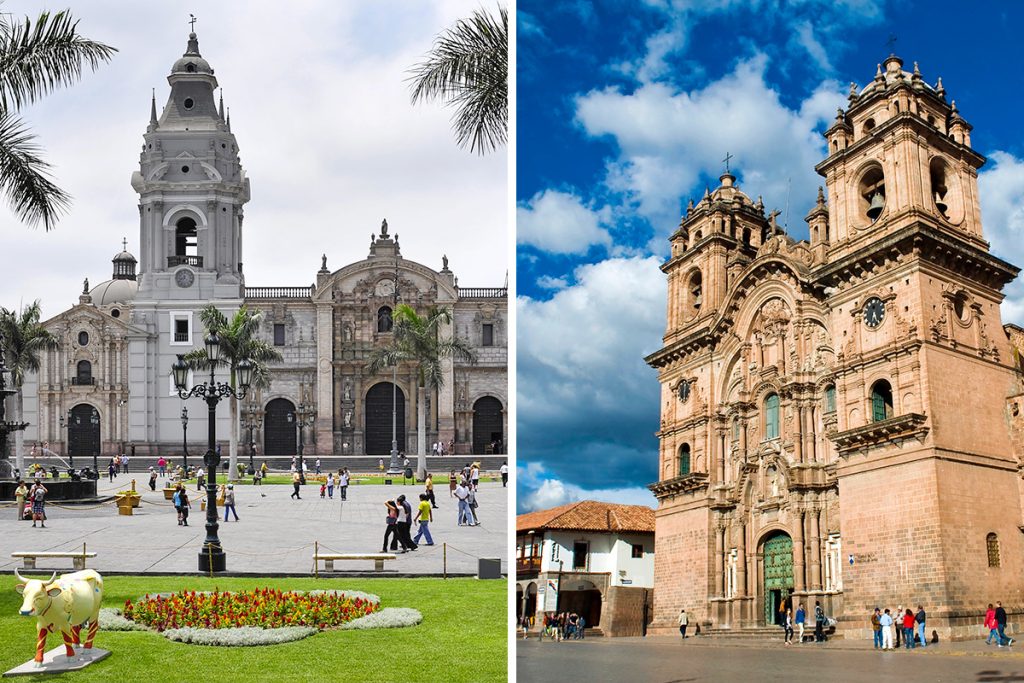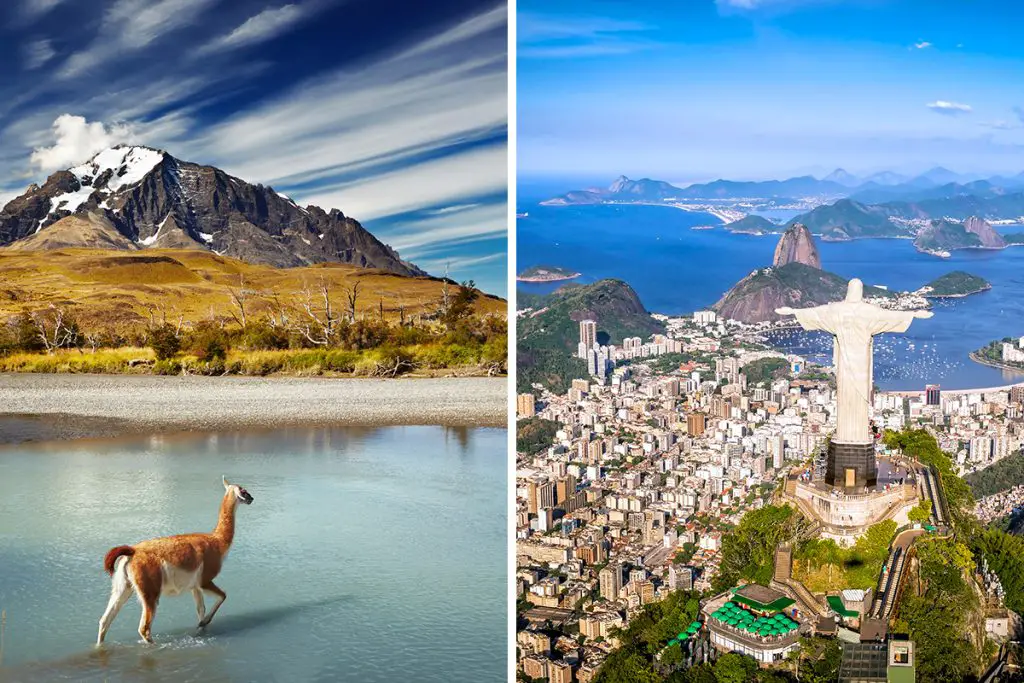Embarking on a journey to either Lima or Santiago is like stepping into a living history book. Each city holds a myriad of stories, framed by the architectural, social, and cultural imprints left behind by the past. Your exploration here is bound to leave you with a deeper appreciation of the Latin American narrative. Shall we delve into the historical and cultural tapestry that defines Lima and Santiago?
History & Culture
Lima and Santiago, while both nestled in the heart of South America, offer distinct historical and cultural landscapes. Your journey through Lima is like a voyage back in time. The city’s origins date back to ancient civilizations, offering a rich historical narrative. Here, the echoes of the past resonate through the city’s architecture, traditions, and the narratives of its people.
Santiago, on the flip side, is a city where the past and present coalesce. It’s a place where historical narratives intertwine with a modern urban culture, creating a dynamic social fabric.
The city’s history, although younger than Lima’s, is no less captivating. Santiago’s colonial past melds with contemporary trends, offering a lively urban atmosphere where history is a living part of the daily landscape.
The historical lineage of Lima takes you on a voyage through pre-Columbian times, colonial eras, and the fight for independence.
This rich historical backdrop has cultivated a unique cultural identity, deeply rooted in traditions and an enduring respect for the past. Your engagement with Lima’s history is like unraveling a complex yet fascinating narrative that has shaped the present-day city.
On the contrary, Santiago’s historical journey is more of a blend between its colonial roots and a striving modernity. The city has embraced its history while also adapting to contemporary influences. This blend has fostered a unique urban culture, marked by a lively social scene and a progressive outlook.
Santiago’s narrative is a compelling exploration of how a city can honor its past while forging ahead into the future.
In summary, both Lima and Santiago offer a rich yet distinct historical and cultural experience. While Lima invites you to delve deeper into a past enriched by ancient civilizations and enduring traditions, Santiago tempts you with a lively blend of history and modern urban culture. Your choice between Lima and Santiago will ultimately hinge on your personal affinity for either a deeply traditional or a vibrant contemporary historical experience.
Attractions & Activities
Embarking on a journey to either Lima or Santiago is your ticket to a realm of fascinating attractions and activities. These cities, each with its own distinct charm, offer a plethora of experiences that beckon the curious traveler. Let’s set our sights on the divergent allure that Lima and Santiago hold, as we venture through the landmarks and activities that define them.
Lima, often considered a gateway to the past, hosts numerous historical attractions. One such marvel is the ancient city of Caral, believed to be the oldest city in the Americas with a history dating back over 5000 years. Your steps through its ancient ruins are steps through time, where every stone holds a story.
Besides, the city’s colonial heart, showcased by the grandiose Plaza de Armas and the awe-inspiring San Francisco Monastery, offers an architectural feast for the eyes.
Santiago, while also rich in historical landmarks, boasts a modernist appeal in its attractions. The towering Sky Costanera offers a panoramic view of the city, juxtaposed against the Andean mountain range. The captivating street art in Barrio Bellavista, a testament to the city’s thriving contemporary culture, offers a colorful spectacle that is both visually and emotionally stirring.
Your adventurous spirit will find a home in either city. In Lima, the surrounding desert presents a canvas for sandboarding and dune buggy rides, making for an exhilarating venture beyond the city’s historical core. Santiago, on the other hand, serves as a gateway to ski resorts in the nearby Andes during winter, providing a snowy playground for the adventurous at heart.
In wrapping up, the attractions and activities in Lima and Santiago are as diverse as the cities themselves. Lima takes you on a historical journey with ancient ruins and colonial landmarks, while Santiago offers a blend of historical sites with a dash of modernity and adventure. Your preference for either a deeply historical expedition or a blend of past and contemporary adventures will steer your choice between Lima and Santiago.
Eating, Drinking & Nightlife
Delving into the culinary scene and the after-dark allure of Lima and Santiago is like embarking on an odyssey for your senses. The flavors, the camaraderie, and the vibrant nightlife in these cities are reflective of their lively cultural ethos. Let’s saunter through the eating, drinking, and nightlife scenes of Lima and Santiago, and discover where your tastes align.
Lima is often heralded as a gastronomic powerhouse. The city’s culinary scene is a delightful fusion of indigenous traditions and international influences, offering a broad spectrum of flavors. From enjoying a classic ceviche in a quaint eatery to indulging in gourmet delights in high-end restaurants like Central and Maido, your palate is in for a treat.
Santiago, while more modest in its culinary acclaim, offers a hearty and satisfying food scene. The city prides itself on its empanadas and asados (barbecues), providing a robust, flavorful experience. Santiago’s eateries offer a cozy, unpretentious ambiance where the food is hearty and the welcome warm.
When it comes to drinking, Lima’s bar scene is a haven for lovers of pisco, a grape brandy that’s the pride of Peru. Tasting a meticulously crafted Pisco Sour in a traditional bar is a rite of passage. Santiago, on the other hand, is a realm where wine reigns supreme. The city is a gateway to Chile’s famed wine regions, and a local wine-tasting journey is a must for any oenophile.
As the sun dips below the horizon, the nightlife in Lima unfolds with a mellow charm. The district of Barranco is known for its bohemian vibe and offers a medley of intimate bars and live music venues. Santiago’s nightlife is more effervescent, with a plethora of trendy clubs in districts like Bellavista, where the rhythm of the night resonates until the early morning hours.
In summary, whether it’s the culinary delights, the favored local beverages, or the beat of the night, both Lima and Santiago have their own unique offerings. Your epicurean and nocturnal adventures in these cities will echo the cultural richness and the vivacious spirit inherent in both Lima and Santiago.
Shopping
The art of retail therapy takes a unique turn in Lima and Santiago. Each city boasts a shopping scene that mirrors its cultural and historical narrative, offering more than just a transaction, but an experience. Let’s navigate through the retail landscapes of Lima and Santiago to unearth the treasures that await.
Lima is a treasure trove for those seeking artisanal goods and handcrafted items. The Inka Market and Dedalo are emblematic of the city’s rich craft tradition, offering a range of pottery, jewelry, textiles, and souvenirs. The meticulous craftsmanship and the cultural stories embedded in these items make shopping in Lima a journey through Peru’s rich heritage.
Santiago, conversely, embraces a more modern and cosmopolitan shopping experience. Malls like Costanera Center and Parque Arauco are microcosms of Santiago’s urban vibrancy, offering a range of international and local brands.
However, the city also has its share of traditional markets like Pueblito Los Dominicos, where you can find handcrafted goods reflecting Chile’s artisanal legacy.
The shopping experience in Lima is akin to a cultural immersion, where each item you come across holds a narrative of Peru’s rich artisanal tradition. It’s a place where the value of shopping transcends beyond the price tag, delving into the realm of cultural appreciation and historical reverence.
On the flip side, shopping in Santiago is a blend of modern retail therapy with a sprinkle of traditional charm. The city’s shopping scene is a mirror of its progressive outlook while still holding onto its roots through markets that celebrate Chilean craftsmanship.
In wrapping up, the shopping escapades in Lima and Santiago offer different delights. Whether it’s the allure of traditional craftsmanship in Lima or the modern retail landscapes intertwined with a touch of tradition in Santiago, your shopping bags will be filled with more than just purchases, but stories and experiences that resonate with the cultural tapestry of these cities.
Accommodation
Discovering a comfy place to rest your head is a pivotal part of your adventure in either Lima or Santiago. Both cities present a bouquet of accommodation options that cater to different tastes and preferences. Let’s delve into the contrasting accommodation landscapes of Lima and Santiago, ensuring your stay is as memorable as the cities themselves.
In Lima, your lodging experience can range from colonial mansions converted into boutique hotels in the heart of the city to modern skyscraper hotels offering panoramic views of the Pacific Ocean. Notable areas like Miraflores and Barranco are known for their wide range of accommodations that mirror the cultural aesthetics of the region.
Santiago also offers a diverse range of accommodation options. Chic modern hotels in the bustling city center, charming bed-and-breakfasts nestled in quiet neighborhoods, or elegant apartments with views of the Andean skyline, there’s something for everyone.
Neighborhoods like Providencia and Las Condes are popular for their variety of lodging options and proximity to city attractions.
Both cities also boast a selection of international hotel chains, ensuring a standard of comfort and service that you might be accustomed to. Moreover, the hospitality of the people in both Lima and Santiago adds a warm touch to your stay.
In essence, whether you’re drawn to the historical charm that accommodation in Lima can offer, or the modern yet cozy options available in Santiago, rest assured your stay will be comfortable. The variety of options in both cities ensures that you’ll find a place that resonates with your preferences, making your journey all the more enjoyable.
Family-Friendliness & Children’s Activities
Taking a family trip to Lima or Santiago unveils a host of activities that are sure to keep the young ones enchanted. Both cities are brimming with experiences that are educational, engaging, and fun for children. Let’s unravel the family-friendly aspects of Lima and Santiago, ensuring a delightful experience for all ages.
Lima, with its rich history, offers a captivating educational experience for children. Places like the Museo Larco provide an interactive journey through Peru’s ancient civilizations. Additionally, the city’s many parks, like Parque de las Leyendas which combines a zoo with archaeological sites, offer a blend of learning and recreation.
Santiago also harbors a wealth of family-friendly activities. Interactive museums like the Museo Interactivo Mirador are designed to ignite curiosity and provide hands-on learning experiences. Moreover, the city’s close proximity to nature allows for enjoyable day trips to the nearby mountains for a breath of fresh air and a splash of adventure.
The city parks in both Lima and Santiago are splendid spots for families to unwind. They offer spacious green areas and playgrounds, and often host entertaining street performances that captivate both the young and the young at heart.
In the realm of family-friendliness, both Lima and Santiago extend a welcoming hand. With their mix of educational venues, city parks, and nature excursions, families are bound to find engaging activities that resonate with the interests and curiosity of their young ones.
Conclusively, the family-friendly ambiance and a plethora of engaging activities for children in both Lima and Santiago ensure that your family trip will be filled with joyful discoveries and cherished memories.
Getting There & Getting Around
The journey to Lima or Santiago and the subsequent exploration of these vibrant cities is a chapter of the adventure itself. Both cities are well-connected to major international destinations and offer a range of local transportation options to explore the urban landscape. Let’s navigate the logistics of getting to and moving around in Lima and Santiago.
Getting to Lima typically involves a flight to Jorge Chavez International Airport (LIM), which is situated 11 km / 6.8 miles from the city center. Santiago’s primary gateway is Arturo Merino Benítez International Airport (SCL), located 15 km / 9.3 miles northwest of downtown Santiago.
Both airports are well-serviced by a range of international airlines, facilitating a smooth arrival to your chosen destination.
Once in Lima, the city’s public transportation network, including buses and the Metropolitano rapid transit system, provides a cost-effective way to explore. Alternatively, taxis and ride-sharing services like Uber are widely available.
In Santiago, the Metro is a popular and efficient way to get around, boasting extensive coverage of the city. Buses and colectivos (shared taxis) also offer reliable transportation options. Moreover, ride-sharing services are readily available to take you to your desired destinations within the city.
Both Lima and Santiago also have bike-sharing programs and pedestrian-friendly areas, especially in their respective downtown regions, offering a pleasant and eco-friendly way to explore the cities.
Summarily, the well-structured transportation networks in Lima and Santiago ensure that your journey to and within these cities will be convenient. Whether you prefer the quick pace of the metro, the flexibility of taxis, or the leisurely rhythm of a bike ride, navigating through the urban landscapes of Lima and Santiago is part of the adventure that awaits.
Weather
The weather in Lima and Santiago plays a significant role in shaping your experience in these vibrant South American cities. Each city boasts a unique climate that could be a deciding factor depending on your weather preference. Let’s explore the atmospheric contrast between Lima and Santiago to better equip you for your journey.
Lima has a desert climate, with mild temperatures year-round. The summer months from December to April are warm and pleasant with temperatures ranging between 63°F to 81°F (17°C to 27°C). It’s a time when the sun graces the city with its presence, making it a preferred period for many travelers.
On the other hand, Santiago experiences a Mediterranean climate with distinct seasons. The summer, from December to February, is warm and dry with temperatures often soaring to 86°F (30°C) or higher. Winter, from June to August, is cool and wet with temperatures hovering between 37°F to 57°F (3°C to 14°C), making it a stark contrast to Lima’s mild winter climate.
In Lima, the winter months from May to October are characterized by overcast skies and a cool, humid atmosphere with temperatures usually between 57°F to 67°F (14°C to 19°C). The gray skies might feel a tad gloomy, yet the temperatures remain mild.
Santiago’s spring (September to November) and autumn (March to May) are mild and pleasant, offering a balanced climate for those who prefer moderate temperatures.
In summary, your preference for warm sunshine or cool, overcast skies could sway your choice between Lima and Santiago. The temperate summer in Lima or the hot, dry summer in Santiago, each provides a unique backdrop to your adventures in these captivating cities.
Safety
Navigating through the safety dynamics in Lima and Santiago is crucial for a seamless urban exploration. Both cities have their own set of safety guidelines which, when adhered to, contribute to a secure and enjoyable experience.
General urban safety practices like keeping your belongings secure, being aware of your surroundings, and avoiding isolated areas after dark are advisable in both Lima and Santiago.
When it comes to unique non-crime safety topics, seismic activity is a noteworthy point. Both Lima and Santiago are situated in regions with seismic activity. Being aware of earthquake safety measures and having a basic emergency plan is prudent.
Moreover, in Santiago, air quality can be a concern, especially during winter months when smog levels tend to rise due to inversion. It’s advisable to check air quality forecasts, particularly if you have respiratory conditions.
In essence, adhering to general safety guidelines, being prepared for natural events, and being cognizant of environmental conditions are steps towards ensuring a safe and enjoyable journey in either Lima or Santiago.
Cost
The cost of exploring Lima and Santiago can vary significantly based on your preferences and choices. A comparative insight into the expenses you might incur in these cities will better prepare you for your South American adventure.
In Lima, you’ll find a variety of dining options that cater to different budget levels. A 3-course meal at a mid-range restaurant might cost around 60 PEN (approximately 15.60 USD), while in Santiago, a similar meal could cost around 22,000 CLP (approximately 24.20 USD). The slight difference in price reflects the overall cost of living in these cities.
Lodging in both cities offers a range from budget-friendly hostels to luxurious hotels. In Lima, a night in a 3-star hotel might cost around 140 USD, whereas in Santiago, it could cost around 130 USD.
Transportation costs are fairly modest in both cities. In Lima, a one-way ticket on public transport costs around 1.5 PEN (less than 1 USD), while in Santiago, it’s about 800 CLP (approximately 0.88 USD).
In summary, your budget can stretch a bit further in Lima compared to Santiago. However, both cities offer a range of options catering to various budget levels, ensuring a delightful experience without burning a hole in your pocket.
Which Is Better – Lima or Santiago?
As you stand on the cusp of choosing between Lima and Santiago for your next excursion, a myriad of factors beckon for your consideration. Each city, with its distinct allure, presents a unique tapestry of experiences. Through a meticulous examination of various facets of these cities, we aim to provide a well-rounded perspective to aid in your decision-making.
The historical and cultural exploration in Lima takes you on a voyage through time, immersing you in a rich past that has shaped the city’s unique identity. Santiago, on the other hand, presents a harmonious blend of historical charm with a modern urban culture, making it a lively and engaging destination.
When it comes to attractions and activities, Lima offers a plethora of historical landmarks and adventure opportunities in the surrounding desert. Santiago, with its modernist appeal and proximity to the Andes, provides a different flavor of adventure alongside a blend of historical and contemporary attractions.
The shoreline near Lima offers a blend of dramatic cliff-backed beaches and surf-friendly shores, while the tranquil, scenic beaches near Santiago provide a peaceful retreat with picturesque coastal towns en route.
The culinary and nightlife scenes in both cities are vibrant, yet distinct. Lima, with its gastronomic acclaim, offers a rich culinary journey, while Santiago provides a hearty, robust food scene. The nightlife in Lima is mellow and bohemian, while Santiago buzzes with energetic clubs and bars.
Shopping in Lima is akin to a cultural expedition with its rich artisanal markets, while Santiago offers a modern retail experience with a touch of traditional charm. Accommodation in both cities ranges from quaint boutique hotels to modern establishments, catering to varied preferences.
The family-friendly ambiance in both cities ensures a joyful and educational experience for the young ones. The ease of transportation in both Lima and Santiago facilitates exploration, although the climate may sway your choice; the temperate climate of Lima or the Mediterranean climate of Santiago.
In terms of safety, both cities require a general awareness and preparedness for natural events. Lastly, the costs and spending in Lima is slightly lower compared to Santiago, making it a more budget-friendly option.
In conclusion, your choice hinges on personal preferences. Lima is a great choice for those seeking a deep historical immersion, a temperate climate, and a lower cost. Santiago, on the other hand, is ideal for individuals yearning for a blend of historical and modern experiences, a vibrant nightlife, and a chance to explore natural beauty nearby. The contrasts between Lima and Santiago are as enriching as they are diverse, each city promising a memorable adventure.

